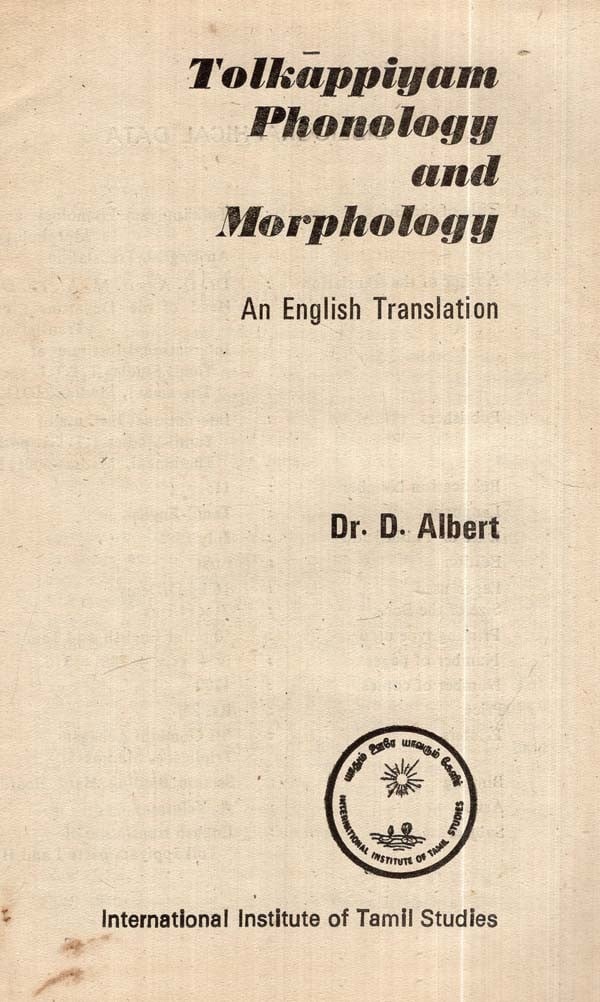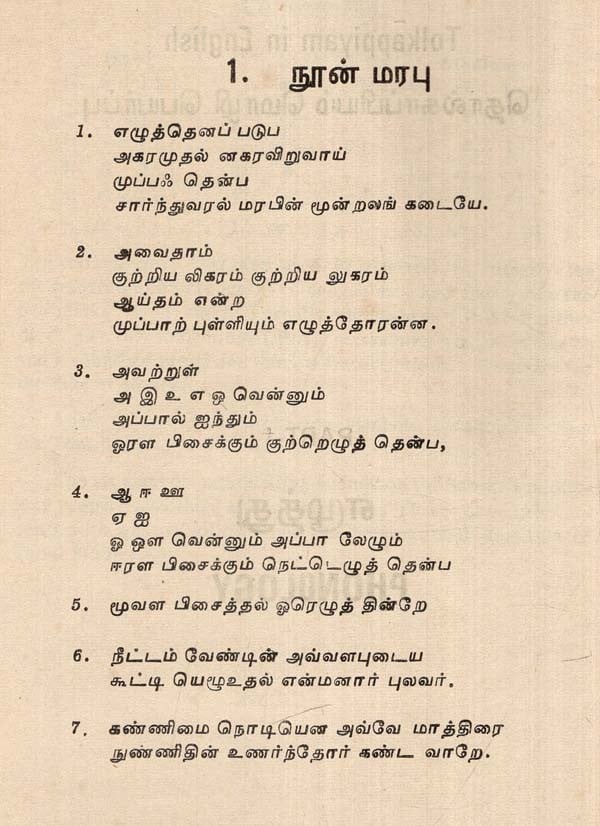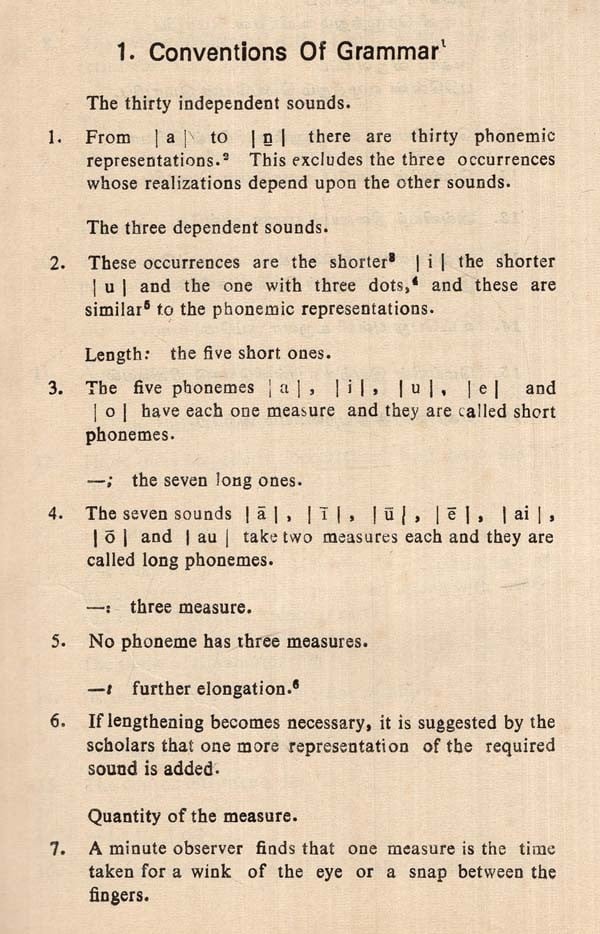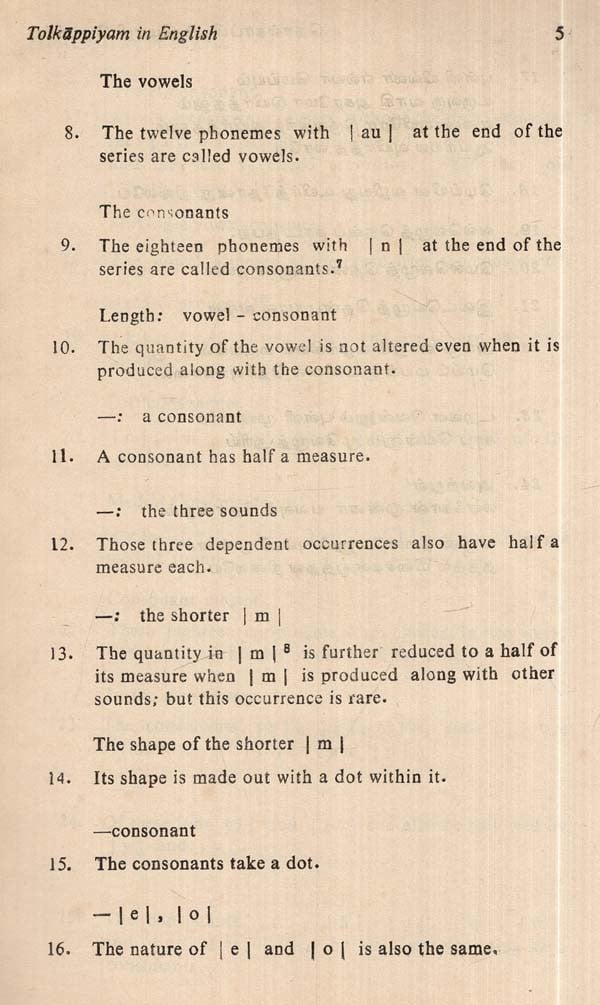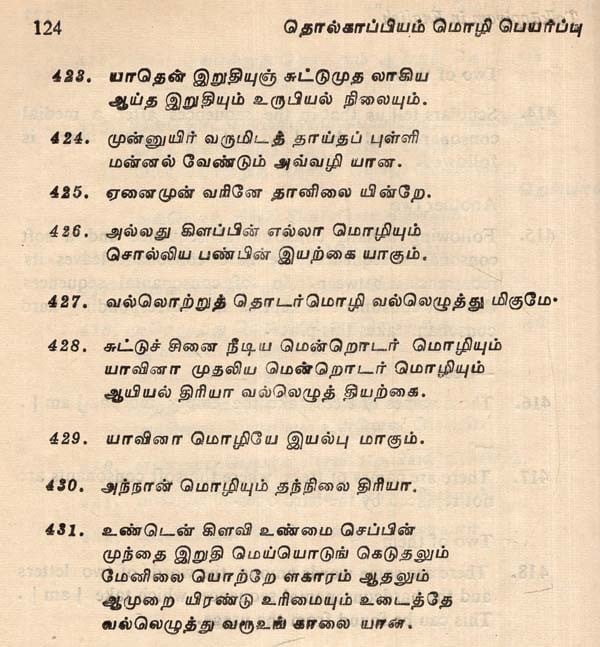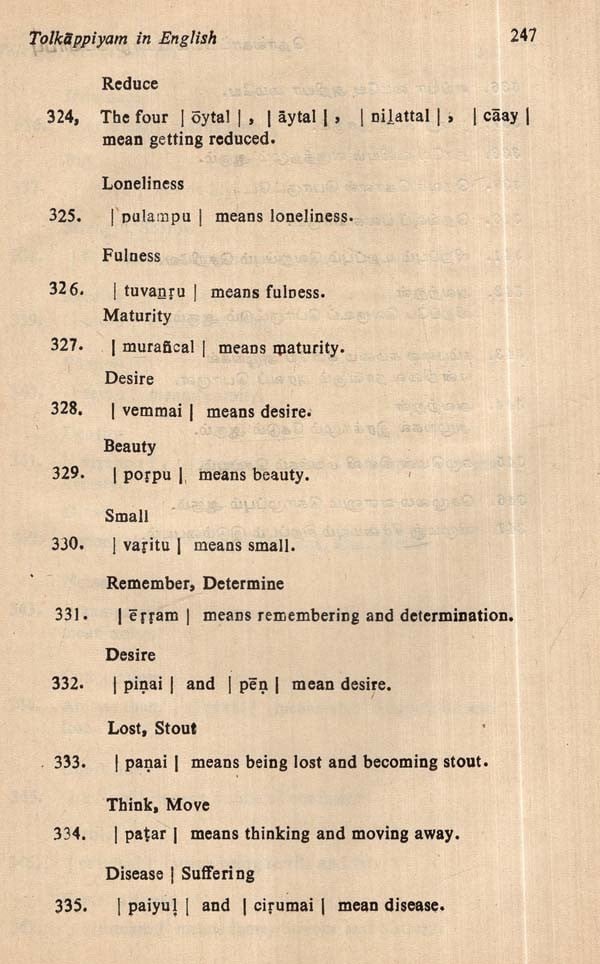
Tolkappiyam: Phonology & Morphology: An English Translation (An Old and Rare Book)
Book Specification
| Item Code: | AZI211 |
| Author: | D. Albert |
| Publisher: | International Institute of Tamil Studies, Chennai |
| Language: | Tamil Text with English Translation |
| Edition: | 1985 |
| Pages: | 316 |
| Cover: | Paperback |
| Other Details | 8.5x5.5 INCH |
| Weight | 293 gm |
Book Description
There are no two opinions that Tolkappiyam, the original of the present translation is the oldest extant work in the Tamil language which itself is the oldest of the proto-Dravidian family of languages. Tamil and Sanskrit share the honour of having an undetermined antiquity. Their inter-relationship could be a very valuable theme of research.
Tolkappiyam records the language rules of antiquity in the form of the tense aphorisms. A striking feature of this work is the structural exposition, not merely of the Tamil language, but of the science of languages in general. This speaks of the long tradition of discipline and refinement in the usage of language which must have preceded this presentation. Indeed, it is one of the earliest human endeavours in the field of linguistics.
This classic work offers some home truths even for the layman who is often buffeted by vague notions of the entity of language and of his own language-identity. Tolkappiyam reconciles the demands of semantics with the need for structure. The message of Tolkappiyam in its entirety appears to be that language is an achievement based on consensus and subject to evolution, rather than something rigid and immutable.
The present translation of the first two books of Tolkappiyam does adequate justice to the pithiness of the original. I am glad that in attempting the translation, Dr. D. Albert has rightly adopted the rhythm of English-and seem to have succeeded in suggesting the rhythm of the original in Tamil. His present attempt holds out the promise that he could take up with competence the translation of the third book, Porul, which marks the beginning of an inquiry into literature.
Kamil Zvelebil made a very meaningful observation in the Introductory Note to his translation of Tolkappiyam. He says, It is my firm conviction that unless the Tolkappiyam is made available in a simple, intelligible and objective English version to Western Tamil and Dravidian scholars, Tamil studies and Dravidian studies will be seriously handicapped."
Dr. D. Albert in his translation of Tolkappiyam has kept in view and visions the demands of these three characteristics which Zvelebil singles out and his aim too seems to be making Tolkappiyam available to the Western scholars through English, though I think it is not directed exactly towards Western Tamil and Dravidian scholars only.
Translations by R Vasudeva Sarma (1933), Vadive Pillai (1934), P. S. S. Sastri (1930-45), E. S. Varadaraja Iyer (1948), Ilaya perumal et Subramania Pillai (1961) and Ilkkuvanar (1963) suffered from a serious handicap which was nobody's fault. The more recent Linguistic or Grammar terminology was not available to them as they are now available to this translator in 1983. This translator is shrewd enough to seize this opportunity and he makes no secret of it.
He rightly thinks that it is almost in a discovery that one finds that the terms and concepts of modern Linguistics based Grammar or Higher Grammar act most suitably in the translation of Tolkappiyam. His list appended at the end of this book justifies the claim of this insight.
Another pitfall this translator has avoided using in transliteration profusely the very Tamil words in the body of the verses. This, I know, disturbs the English reader. This is a very useful exercise for the learner of the language but does not help in the same plain the linguist-researcher. While the Tamil reader reads the English letters of the alphabet and makes out the shape and string of equivalents because of his previous knowledge of Tamil, the English reader who has no easy familiarity with Tamil finds it a great hurdle and so this translation avoids the transliterated Tamil words and uses them only when the very word or morpheme is kept in discussion. This seems to be a great advantage. When Ilakkuvanar said after Tolkappiyam
